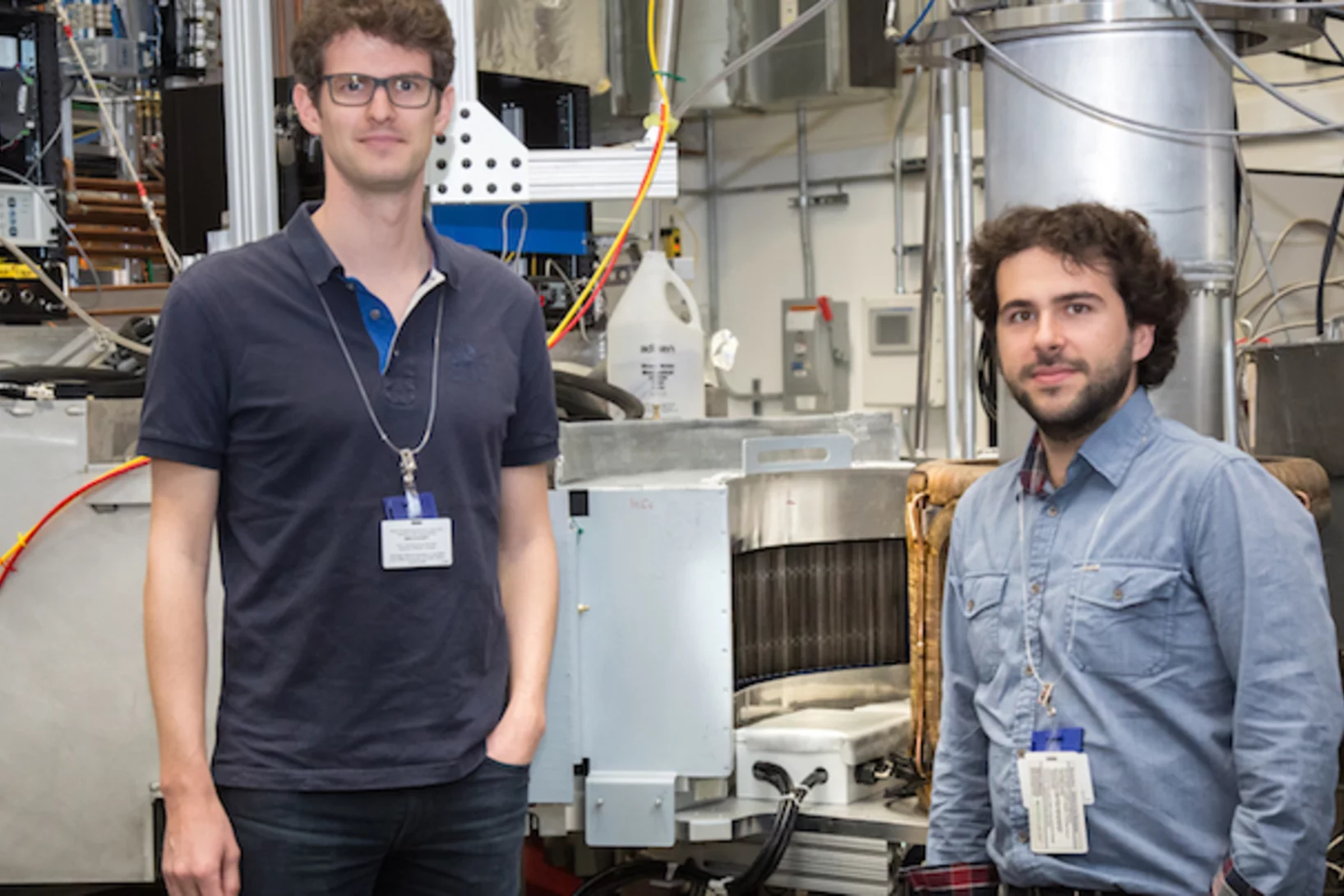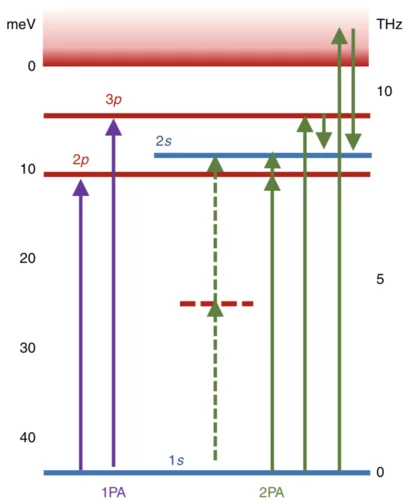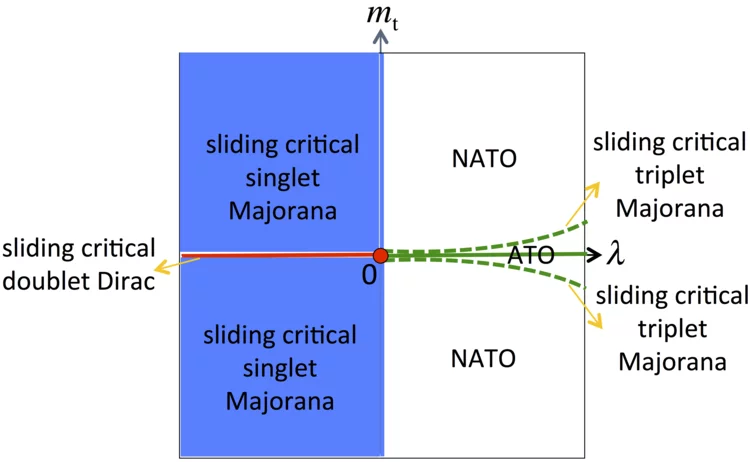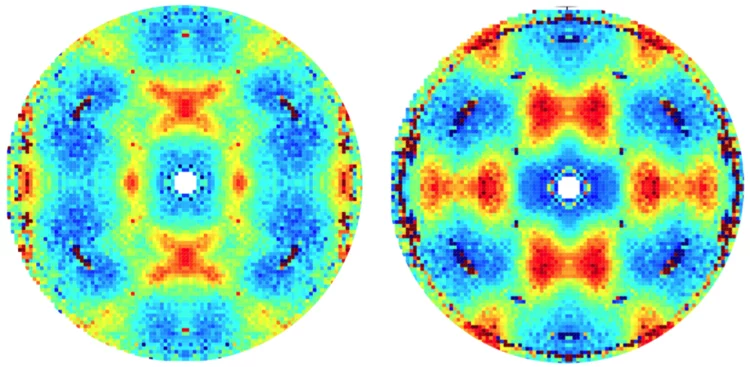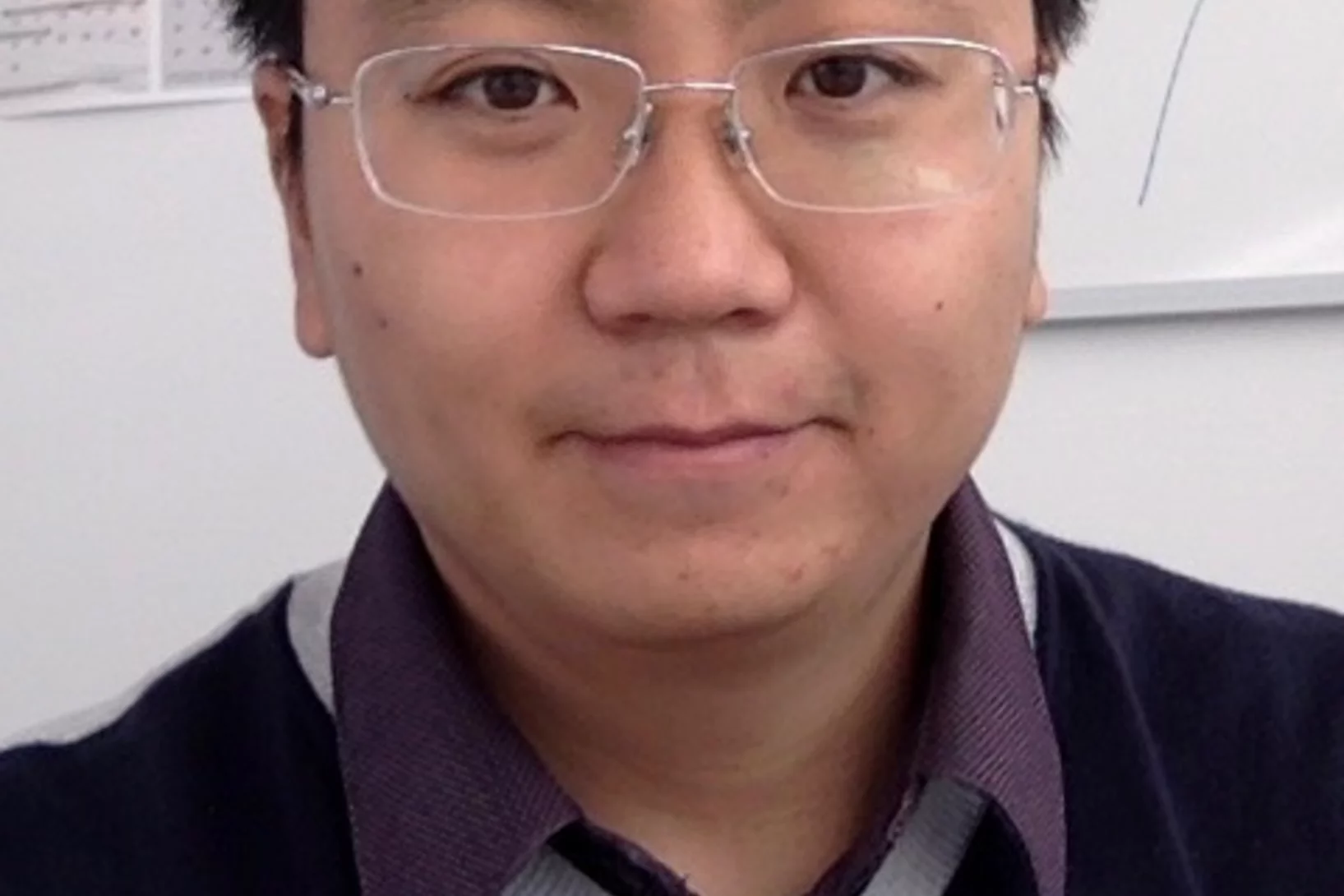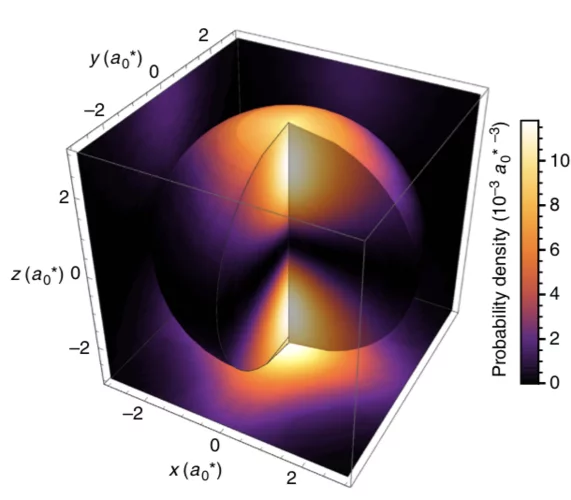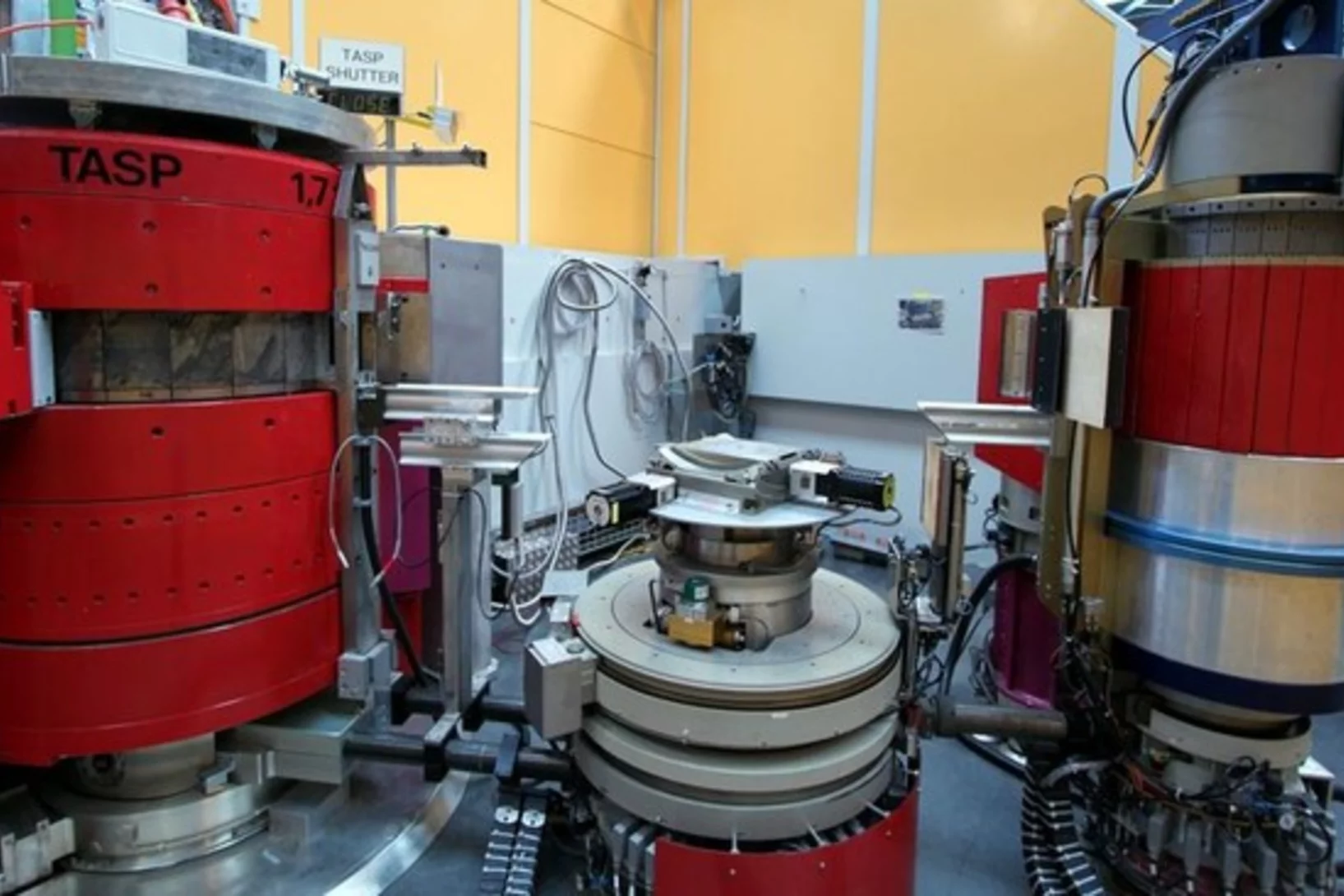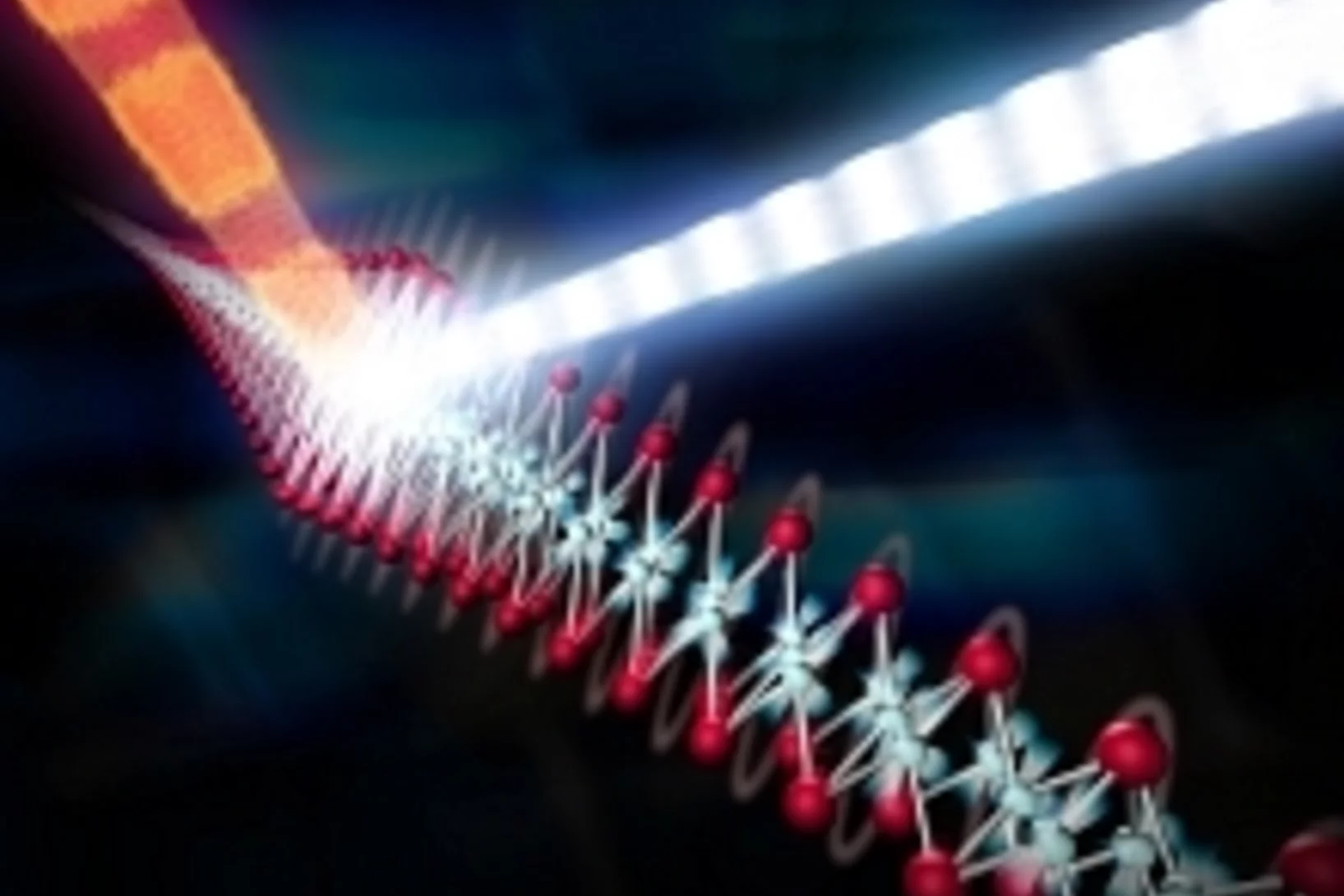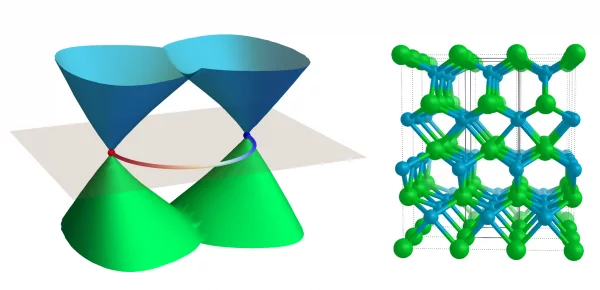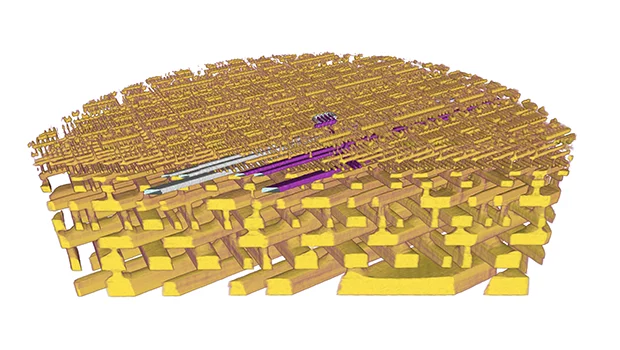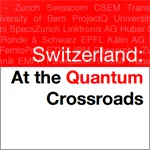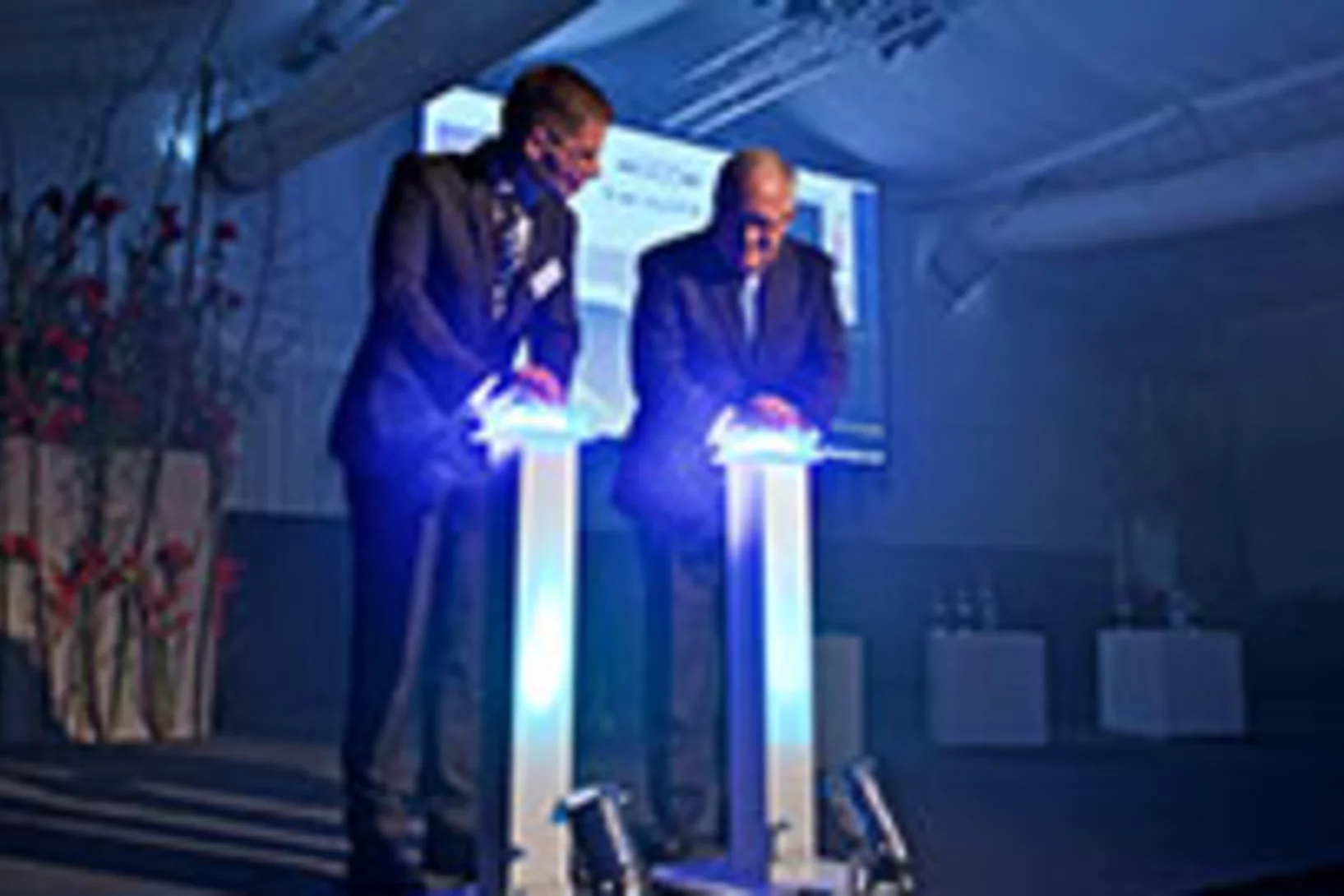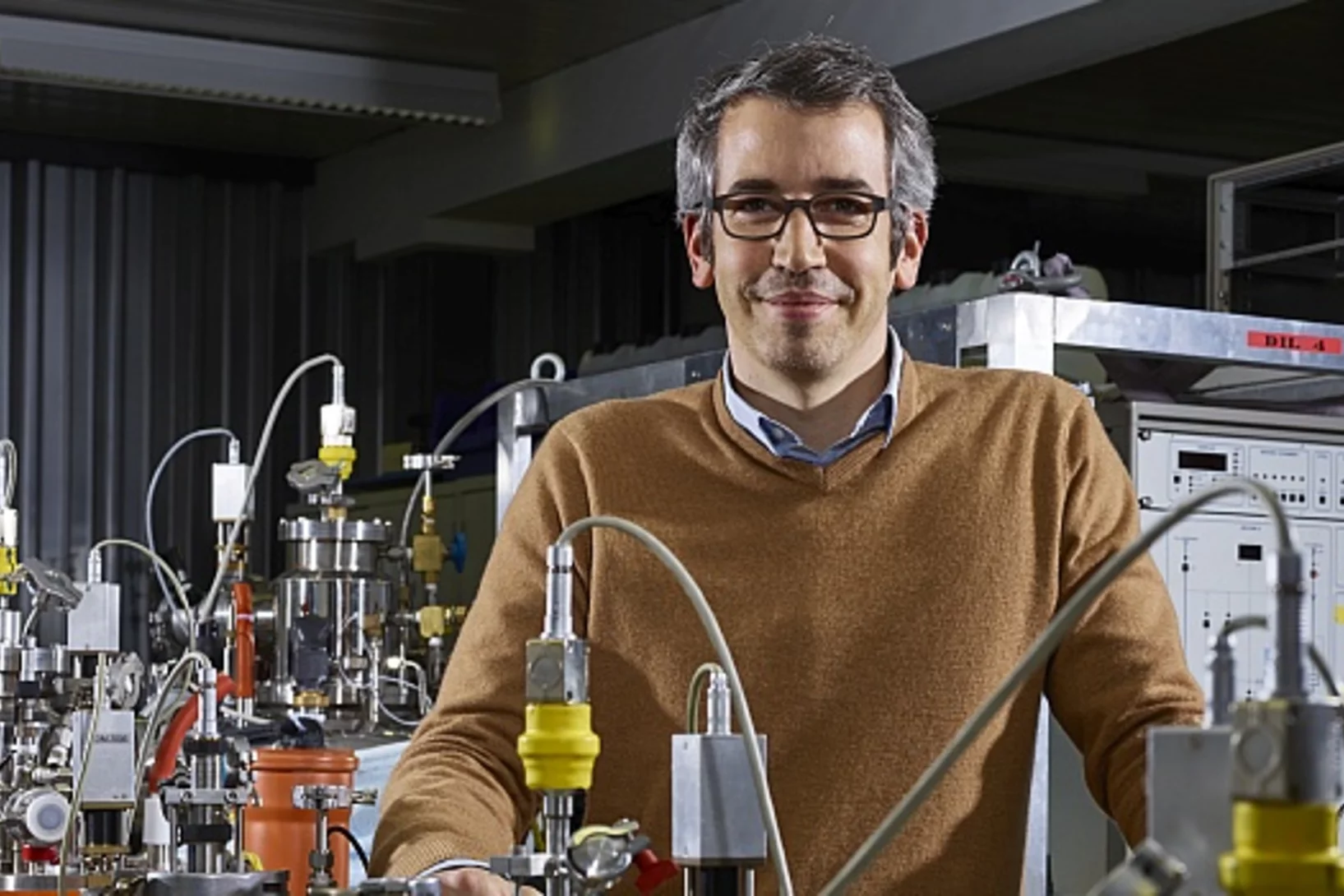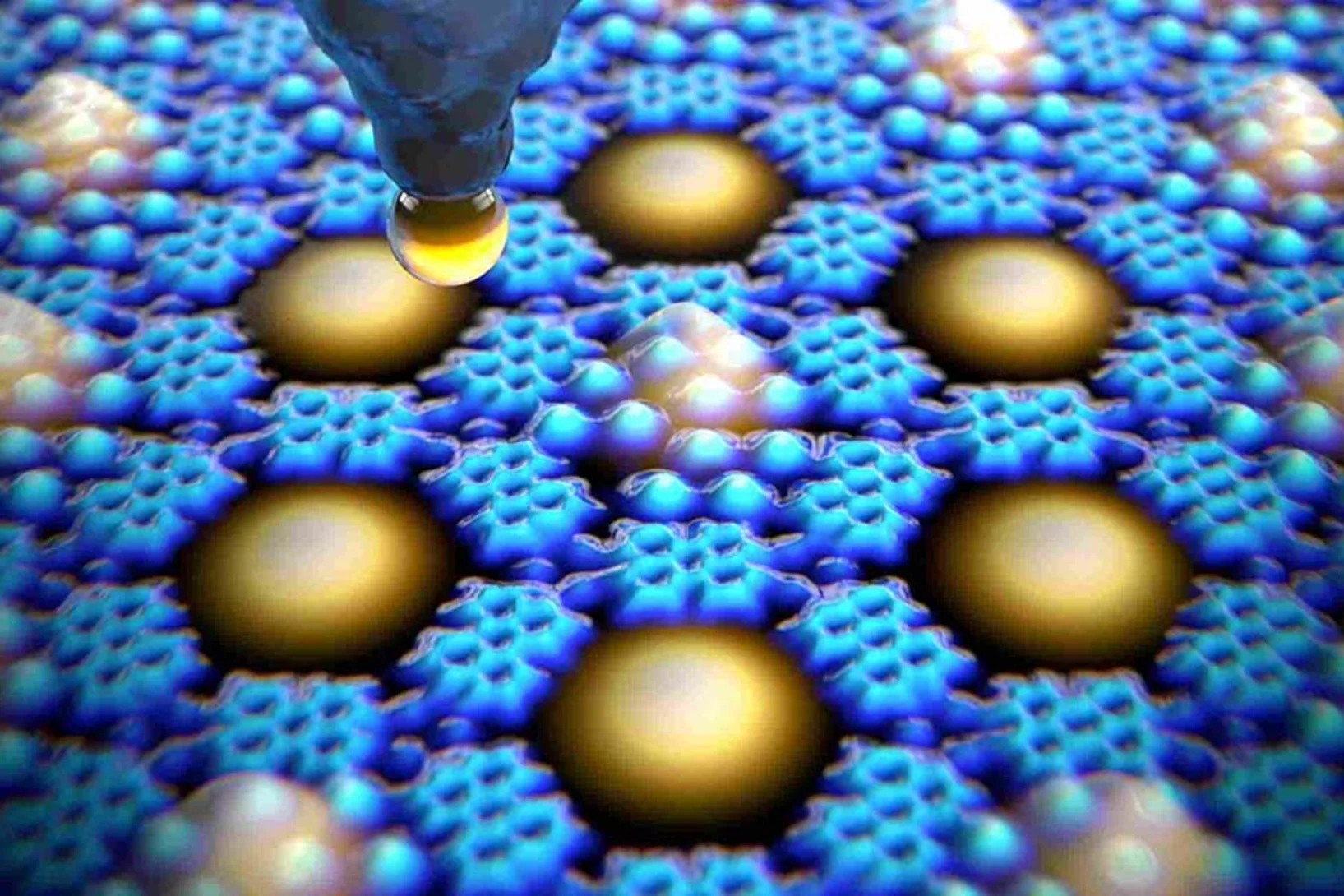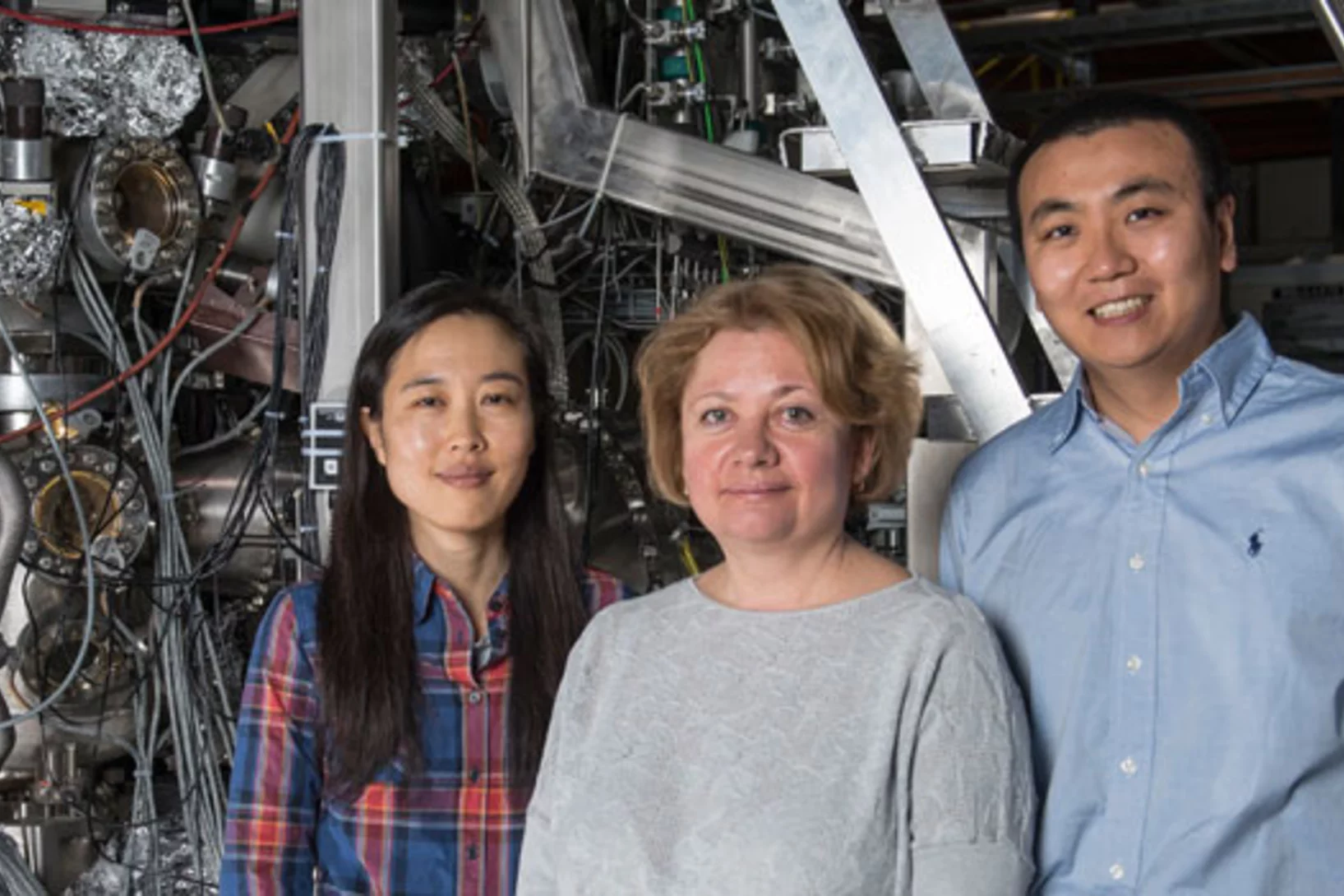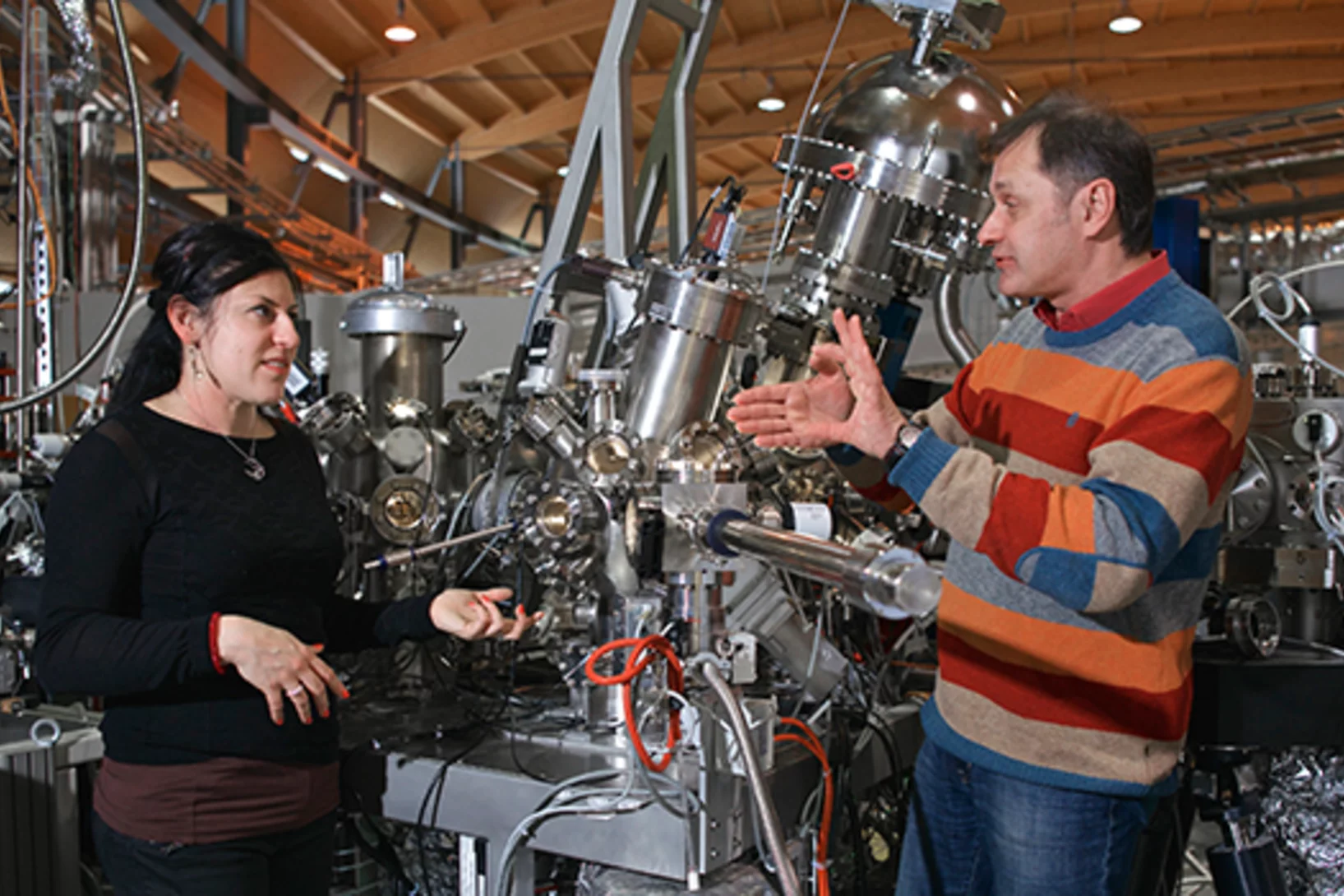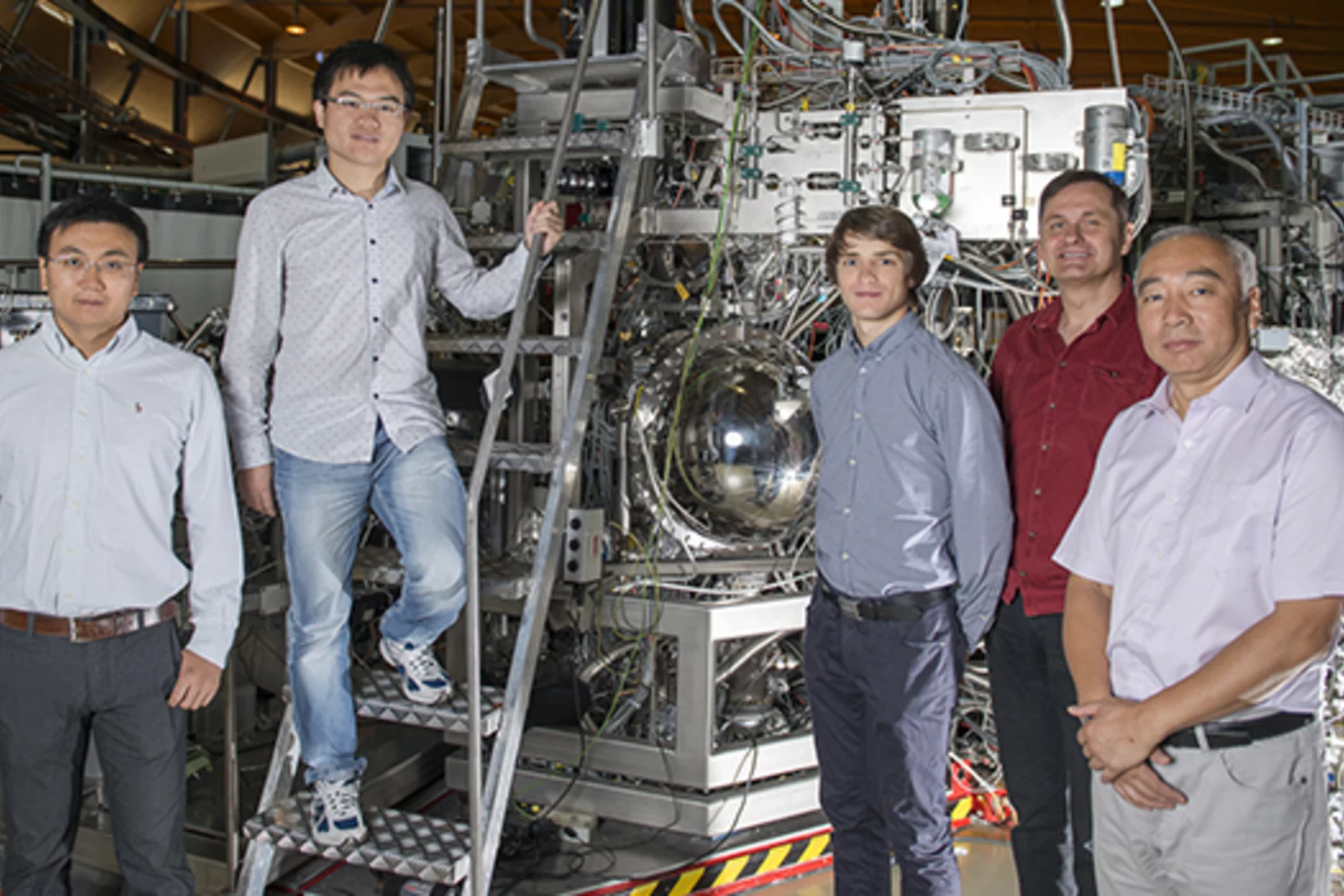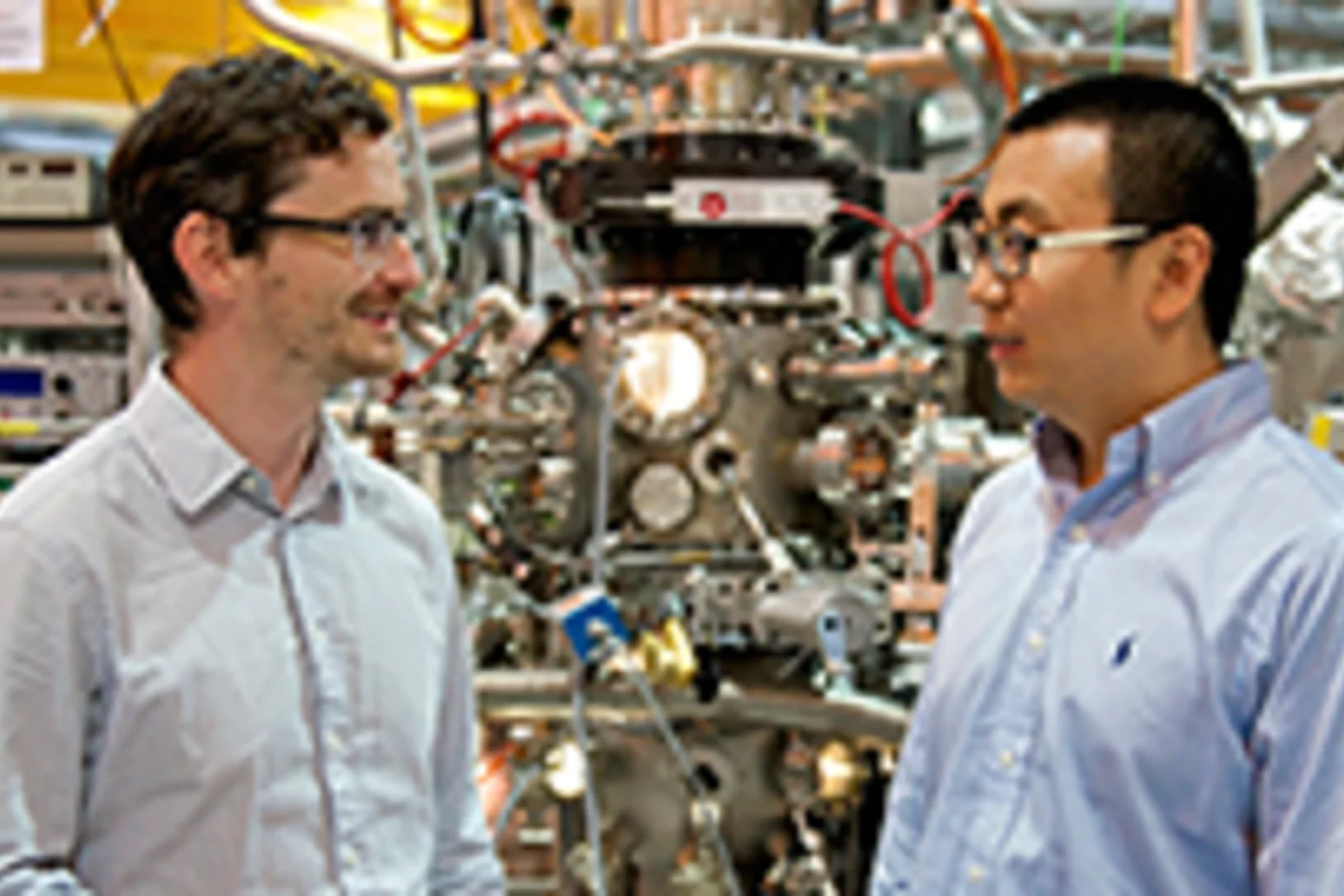Show filters
Spin ice goes quantum
Numerous intriguing behaviours have been observed already in magnetic materials known as spin ices. But now for the first time direct manifestations of quantum mechanical effects have been seen in such a system.
Giant multiphoton absorption points towards new methods for THz quantum control
In findings recently published in Nature Photonics, a team including researchers from the UK, the Netherlands and Photon Sciences division head Gabriel Aeppli have investigated multi-photon THz absorption in Si:P. Their studies, using the THz free-electron laser FELIX, discovered a two photon absorption cross-section ten orders of magnitude higher than that of a natural hydrogen atom and may enable new methods in quantum control. In addition to the original publication their findings are also discussed in a 'News and Views' article.
Coupled quantum wires realize Abelian and non-Abelian topological order in two-dimensional space
Christopher Mudry and his collaborators have shown theoretically how to construct strongly interacting phases of matter that realize topological order in two-dimensional space by strongly coupling quantum wire. Remarkably, their model supports both Abelian topological order (ATO) and non-Abelian topological order (NATO) with a continuous phase transition separating them. Read the full paper here
Frustratingly disordered
A study of how disorder affects a ‘frustrated’ magnet reveals a surprising robustness of the underlying quantum many-body state, and provides evidence for emerging quantum phenomena induced by disorder.
Dr. Nan Xu awarded SPS 2017 Prize in Condensed Matter Physics
The SPS 2017 Prize in Condensed Matter Physics, sponsored by IBM, has been awarded to Dr. Nan Xu for his excellent work on topological quantum states. Dr. Nan Xu is a joint postdoc of Paul Scherrer Institute (PSI) and the École Polytechnique Fédérale de Lausanne (EPFL).
Coherent superpositions of three states for phosphorous donors in silicon prepared using THz radiation
Superposition of orbital eigenstates is crucial to quantum technology utilizing atoms, such as atomic clocks and quantum computers, and control over the interaction between atoms and their neighbours is an essential ingredient for both gating and readout. A team of researchers including Photon Science division head Gabriel Aeppli has demonstrated THz laser pulse control of Si:P orbitals using multiple orbital state admixtures, observing beat patterns produced by Zeeman splitting. The beats are an observable signature of the ability to control the path of the electron, which implies we can now control the strength and duration of the interaction of the atom with different neighbours. This could simplify surface code networks which require spatially controlled interaction between atoms. The full article can be read in Nature Communications
New quantum state observed in a Shastry–Sutherland compound
Scientists from PSI and the École polytechnique fédérale de Lausanne (EPFL) have shown experimentally, for the first time, a quantum phase transition in strontium copper borate, the only material to date that realizes the famous Shastry–Sutherland quantum many-body model.
Scientists get first direct look at how electrons ‘dance’ with vibrating atoms
Scientists at the SLAC National Accelerator Laboratory and Stanford University - one of the leading authors, Simon Gerber, has in the meantime relocated to PSI - have made the first direct measurements, and by far the most precise ones, of how electrons move in sync with atomic vibrations rippling through an quantum material, in the present study an unconventional superconductor, as if they were “dancing" to the same beat.
Nondestructive imaging of atomically thin nanostructures buried in silicon
A team of researchers including Photon Sciences division head Gabriel Aeppli have demonstrated the first non-destructive imaging of atomically thin nanostructures in silicon. Such structures are the building blocks of quantum devices for physics research and are likely to serve as key components of devices for next-generation classical and quantum information processing. Until now, the characteristics of buried dopant nanostructures could only be inferred from destructive techniques and/or the performance of the final electronic device; this severely limits engineering and manufacture of real-world devices based on atomic-scale lithography. In work recently published in Science Advances, the team use scanning microwave microscopy (SMM) to image and electronically characterize three-dimensional phosphorus nanostructures fabricated via scanning tunneling microscope based lithography.
Wafer-thin Magnetic Materials Developed for Future Quantum Technologies
For the first time, researchers have produced a wafer-thin ferrimagnet, in which molecules with different magnetic centers arrange themselves on a gold surface to form a checkerboard pattern. Scientists at the Paul Scherrer Institute, in collaboration with their research partners, published the findings in the journal Nature Communications.
Distinct, but not so different
Among superconducting materials, CeCoIn5 stands out as a rare case where superconductivity gives rise to magnetic order. An international team led by PSI physicist Michel Kenzelmann now reports that when small amounts of impurities are implanted into CeCoIn5, then two distinct magnetic phases appear — and these are surprisingly similar to one another.
A breakthrough on Weyl semimetals
In their recent paper, Distinct Evolutions of Weyl fermion quasiparticles and Fermi arcs with bulk band topology in Weyl semimetals, two MARVEL groups — led by Prof. Ming Shi and Dr Nan Xu at PSI for the experimental part, and with Prof. Oleg Yazyev and Dr Gabriel Autès at EPFL for the theoretical side — joined forces to shed light (and soft X-rays) on the relationship between the bulk band topology in Weyl semimetals and two measurable signatures of Weyl fermion quasiparticles: magneto-transport effects in the bulk, and Fermi arcs on the surface.
La radiographie en 3D permet de visualiser les moindres détails d’une puce informatique
Des chercheurs de l’Institut Paul Scherrer PSI ont réalisé des radiographies détaillées en 3D d’une puce informatique usuelle. Dans le cadre de leur expérience, ils ont analysé une petite portion de puce qu’ils avaient préalablement découpée. Durant la mesure, cet échantillon est resté intact. Pour les fabricants, déterminer si la structure de leurs puces est conforme aux normes représente un défi. Ces résultats constituent donc une possibilité d’application importante pour un procédé spécifique de tomographie à rayons X que les chercheurs du PSI développent depuis quelques années.
Switzerland at the Quantum Crossroads document endorsed by QTC@PSI members
“Switzerland at the Quantum Crossroads” outlines the current quantum science and technology landscape in Switzerland, explains the promises of this technology and outlines the required steps for Switzerland to leverage its leadership in this space.
Le SwissFEL a été inauguré
Aujourd’hui, 5 décembre 2016, le PSI a solennellement inauguré son nouveau grand instrument de recherche, le SwissFEL, en présence du président de la Confédération Johann Schneider-Ammann.
Des fonds européens à hauteur de 2,6 millions de francs pour de la recherche sur les interactions fondamentales dans certains aimants
Christian Rüegg reçoit un prestigieux subside de recherche européen appelé ERC Consolidator Grant. Avec ces fonds, il entend étudier les interactions des plus petits composants de la matière.
Controlling Quantum States Atom by Atom
A method to precisely alter the quantum mechanical states of electrons within an array of quantum boxes has been developped by an international consortium also including PSI. The method can be used to investigate the interactions between various types of atoms and electrons, which is essential for future quantum technologies.
Une nouvelle particule qui pourrait servir de base à de l’électronique économe en énergie
Le fermion de Weyl, découvert seulement l’an dernier, se déplace pratiquement sans résistance à l’intérieur de certains matériaux. Des chercheurs montrent à présent une voie possible pour l’utiliser dans des composants électroniques.
Ralentissement du flux électrique peut montrer la voie vers des ordinateurs économes en énergie
Les ordinateurs et les autres appareils électroniques représentent aujourd’hui une part considérable de la consommation d’énergie, une part dont il est pratiquement impossible de modifier l’importance avec les technologies actuellement utilisées. Les puces électroniques qui prendront place dans les appareils économes en énergie de demain devront donc être composées de matériaux innovants. De nouveaux résultats de recherche indiquent une voie possible comment on peut obtenir ces matériaux.
Un cousin de l’électron finalement observé au bout de 86 ans
Dans le cadre d’essais à la Source de Lumière Suisse SLS, des physiciens de l’Institut Paul Scherrer PSI dans une collaboration internationale avec des collègues de la Chine, de l’EPF Zurich et de l’EPF Lausanne ont observé une particule dont l’existence avait été prédite il y a déjà 86 ans. Cette nouvelle particule fait partie de la même famille que l’électron, le porteur de courants électriques. Contrairement à l'électron, la nouvelle particule n'a pas de masse et il n’apparaît que dans une classe particulière de matériaux qui sont dénommés des métaloïdes de Weyl.
Geordneter Elektronenfluss im Isolator
Forschende des PSI, der EPFL und der Chinesischen Akademie der Wissenschaften haben gezeigt, dass das Material SmB6 alle Eigenschaften eines topologischen Isolators zeigt, also eines Materials, an dessen Oberfläche polarisierte Ströme fliessen können. Das Besondere an diesem Material ist, dass die Eigenschaft sehr robust ist à an der Materialoberfläche fliessen nur polarisierte Ströme und die Eigenschaft bleibt auch bei kleinen Unregelmässigkeiten in der Struktur oder Zusammensetzung des Materials erhalten. Polarisierte Ströme sind für die Spintronik à Elektronik, die den Elektronenspin nutzt à wichtig.Cette actualité n'existe qu'en allemand.
